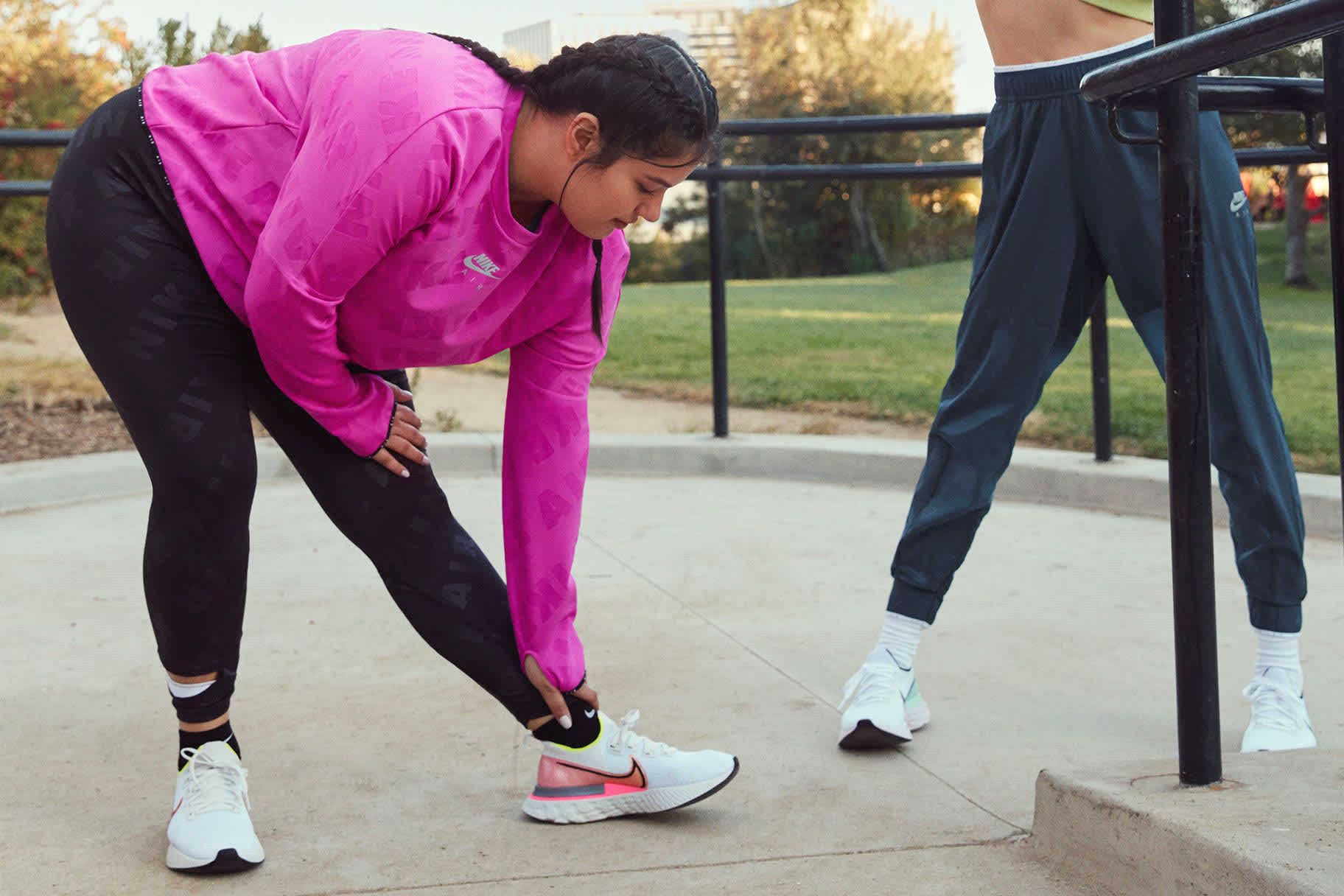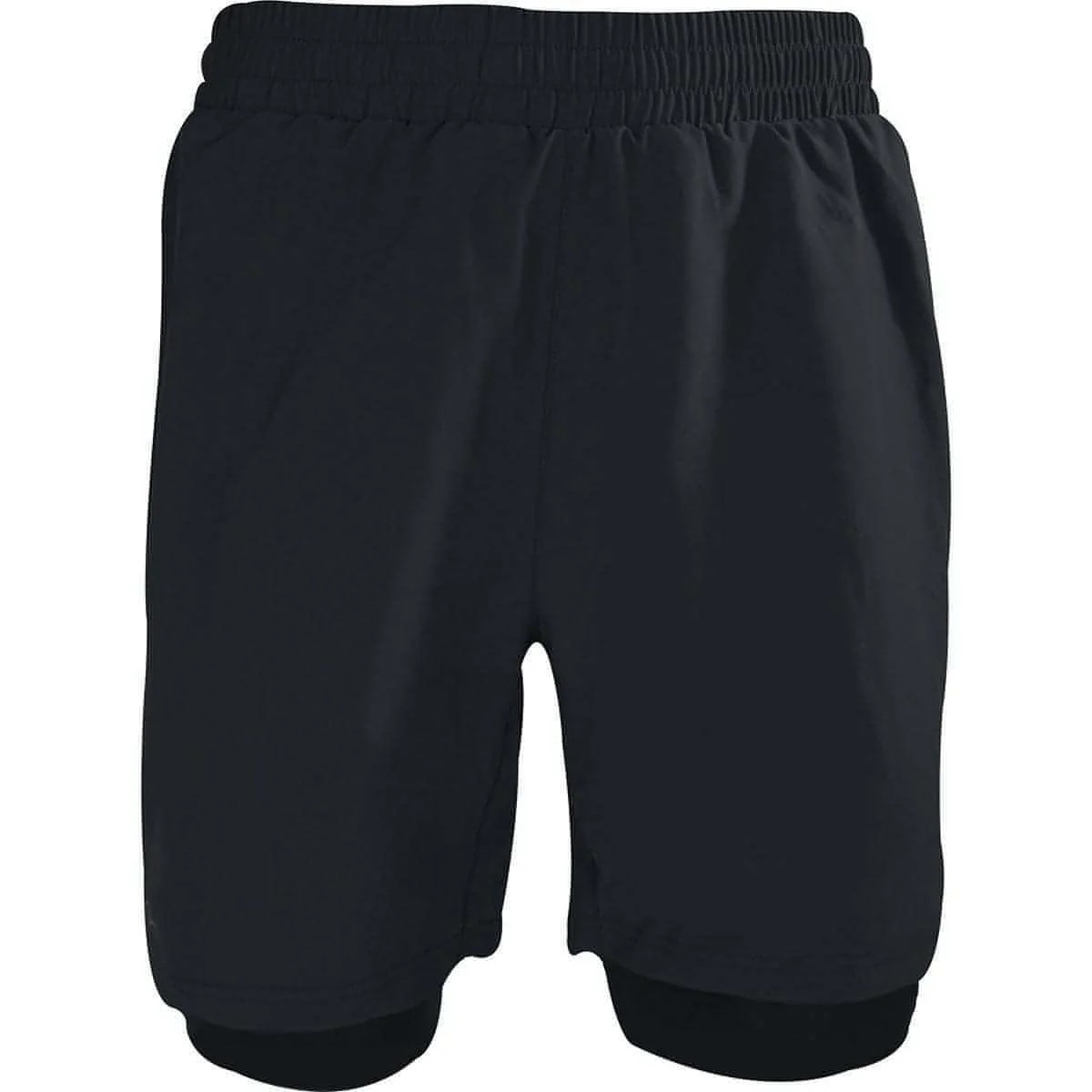

Featured
What Should I Do After A Workout
Modified: August 19, 2023
Discover the optimal post-workout routine to maximize gains and recovery! Follow our featured tips to enhance your fitness results.
Introduction
After a challenging workout, it’s natural to feel a sense of accomplishment and satisfaction. However, your efforts shouldn’t stop there. What you do in the post-workout period is just as important as the actual exercise itself. Giving your body the proper care and attention it needs after a workout is crucial for optimal recovery, muscle growth, and overall performance improvement.
Many people make the mistake of neglecting the post-workout phase, assuming that the hard work is over. But in reality, what you do in the minutes and hours following your workout can significantly impact your body’s ability to repair, rebuild, and replenish.
In this article, we will discuss essential steps you should take after your workout to maximize recovery and reap the benefits of your training sessions. From hydration and stretching to proper nutrition and rest, we will guide you through the post-workout process to ensure you achieve your fitness goals.
So, whether you’re a seasoned athlete, a weekend warrior, or a fitness enthusiast, read on to learn what you should do after a workout to facilitate your body’s recovery and make the most out of your training efforts.
Importance of Post-Workout Recovery
The post-workout recovery phase is an often overlooked, yet critical, part of any fitness routine. It’s during this time that your body repairs damaged tissues, replenishes energy stores, and adapts to the stimulus of exercise. Failing to prioritize post-workout recovery can lead to decreased performance, increased risk of injuries, and hindered progress towards your fitness goals.
One of the key reasons why post-workout recovery is important is muscle repair and growth. When you exercise, you create microscopic tears in your muscles. During the recovery period, these tears are repaired, and the muscle fibers become stronger and more resilient. Without proper recovery, these tears might not heal correctly, leading to muscle imbalances, chronic pain, and limited gains in strength and size.
Moreover, intense physical activity depletes your body’s glycogen stores – the carbohydrates stored in your muscles and liver. Post-workout recovery allows for the replenishment of these glycogen stores, ensuring that you have the necessary fuel for your next workout. Failure to replenish glycogen adequately can result in low energy levels, decreased workout performance, and even muscle breakdown as the body seeks alternative sources of energy.
Another vital aspect of post-workout recovery is hormone balance. Exercise triggers the release of various hormones, such as cortisol, which helps the body respond to stress, and growth hormone, which promotes tissue repair. The recovery phase allows these hormonal levels to return to normal, preventing excessive cortisol production that can lead to muscle breakdown and promoting the release of growth hormone for muscle repair and growth.
In addition to physiological benefits, post-workout recovery also plays a role in injury prevention. Engaging in proper cool-down exercises and stretching after your workout session helps to bring your heart rate and breathing back to normal gradually. This aids in flushing out waste products, such as lactic acid, preventing the build-up of toxins that can cause muscle soreness and stiffness. Stretching also promotes flexibility, reducing the risk of muscle strains and injuries during future workouts.
By prioritizing post-workout recovery, you give your body the time and resources it needs to adapt and improve. Whether your goal is to build strength, increase endurance, or simply stay active and healthy, allowing for adequate recovery will contribute to better overall performance and long-term success.
Hydrate Properly
Proper hydration is vital before, during, and especially after a workout. When you exercise, your body loses water through sweat, leaving you at risk of dehydration. Dehydration not only impairs performance but also slows down the recovery process.
During your workout, aim to drink water regularly to prevent excessive fluid loss. But it doesn’t end there – rehydrating after exercise is crucial to replenish the water you’ve lost and restore optimal body function.
How much water you need depends on various factors, such as the intensity and duration of your workout, as well as individual factors like body weight and sweat rate. It’s a good practice to drink at least 16-20 ounces of water within the first hour after your workout. This helps to replace fluids and jumpstart the recovery process.
In addition to plain water, consider including electrolytes in your post-workout hydration routine. Electrolytes are minerals like sodium, potassium, and magnesium, which are essential for various bodily functions, including muscle contractions and nerve impulses.
You can replenish electrolytes by consuming sports drinks or electrolyte-infused water. Alternatively, you can include foods rich in these minerals in your post-workout meal, such as bananas for potassium or leafy greens for magnesium.
It’s important to note that different individuals have different fluid needs, so pay attention to your body’s thirst signals and adjust your hydration accordingly. If your urine is pale yellow or clear, it’s generally a good sign that you are adequately hydrated.
Proper hydration not only aids in recovery but also helps flush out metabolic waste products, supports nutrient absorption, and promotes optimal cellular function. So, make it a habit to hydrate properly after your workouts to maximize your body’s recovery potential and optimize your overall health and performance.
Stretching and Cool-Down
After an intense workout, your muscles are warm, pliable, and primed for stretching. Incorporating a stretching routine into your post-workout recovery can help improve flexibility, reduce muscle soreness, and promote overall muscle recovery.
Start your cool-down by performing gentle aerobic exercises at a lower intensity than your actual workout. This gradual decrease in intensity allows your heart rate and breathing to return to their resting levels gradually. Slowly walk or jog, or perform low-impact exercises for 5-10 minutes to allow for this transition.
Once your heart rate has slowed, it’s time to move on to stretching. Focus on stretching the major muscle groups that were involved in your workout, holding each stretch for 15-30 seconds. Pay attention to areas that may feel particularly tight or tense, and give them some extra attention.
Some effective post-workout stretches include forward folds, quadriceps stretches, hamstring stretches, chest stretches, and shoulder stretches. Remember to stretch both sides of your body equally to maintain balance.
Stretching not only helps reduce muscle tension but also encourages blood flow to the muscles, aiding in the removal of lactic acid and other waste products that can cause muscle soreness and tightness. It also helps lengthen muscle fibers, improving flexibility and range of motion, which is important for injury prevention and overall athletic performance.
In addition to static stretching, consider incorporating dynamic stretching exercises into your cool-down routine. Dynamic stretching involves moving through a range of motion with controlled movements. This can include exercises like leg swings, arm circles, or walking lunges. Dynamic stretching helps warm up the muscles, increase flexibility, and prepare your body for future workouts or activities.
Remember to listen to your body during stretching. It’s normal to feel mild discomfort or tension, but avoid any movements or stretches that cause pain. If you’re unsure about proper stretching techniques or have specific areas of concern, consider consulting with a qualified fitness professional or physical therapist.
Adding stretching and a cool-down routine to your post-workout recovery regimen will not only enhance your physical performance but also contribute to injury prevention and overall well-being. So, take the time to stretch and cool down after your workouts to improve flexibility, reduce muscle soreness, and promote a faster and more effective recovery.
Refuel with Proper Nutrition
One of the most crucial aspects of post-workout recovery is refueling your body with the right nutrients. After a workout, your muscles are depleted of energy and in need of replenishment. Providing your body with adequate nutrition post-exercise not only supports muscle recovery but also helps optimize performance for future workouts.
Protein is a critical component of your post-workout nutrition. It plays a vital role in repairing and rebuilding muscle tissues that have been broken down during exercise. Aim to consume a source of high-quality protein within 30-60 minutes after your workout. This can include lean meats, poultry, fish, eggs, dairy products, or plant-based options like tofu or legumes.
Carbohydrates are also essential for replenishing glycogen stores and providing energy to your muscles. Consuming a combination of protein and carbohydrates post-workout can enhance glycogen replenishment and muscle protein synthesis. Opt for complex carbohydrates like whole grains, fruits, and vegetables, as they provide sustained energy and essential nutrients.
In addition to protein and carbohydrates, don’t forget about hydration. Water is fundamental for proper nutrient absorption and overall bodily function. Pair your post-workout meal with adequate water consumption to aid digestion, nutrient transportation, and waste elimination.
Timing is key when it comes to post-workout nutrition. Try to consume a balanced meal or snack containing protein, carbohydrates, and fluids within 1-2 hours after your workout. This window of time, known as the “anabolic window,” is when your body is most receptive to nutrients, maximizing their utilization for recovery and muscle growth.
However, if you’re unable to have a complete meal immediately after your workout, don’t worry. The most important thing is to listen to your body and fuel it with the right nutrients as soon as possible. Preparing a post-workout snack or shake in advance can ensure you have a quick and convenient option to refuel on the go.
Individuals with specific dietary needs or goals may benefit from consulting with a registered dietitian or nutritionist to tailor their post-workout nutrition plan. They can provide personalized recommendations and help maximize your recovery and performance through appropriate food choices and portion sizes.
Remember, the food you consume after a workout provides the building blocks your body needs to repair and grow stronger. So, make it a priority to refuel with proper nutrition to optimize your recovery, support muscle growth, and fuel your fitness journey.
Rest and Sleep
Rest and sleep are often underestimated when it comes to post-workout recovery, but they are essential for allowing your body to heal, repair, and adapt to the physical demands of exercise. While pushing yourself during workouts is important, giving yourself ample time to rest and recover is equally crucial for optimal performance and overall well-being.
Rest days are an integral part of any training program. These are designated days where you allow your body to recover and rejuvenate. It’s during these periods of rest that your muscles rebuild and become stronger. Avoid the temptation to skip rest days or engage in intense physical activity on consecutive days. Instead, use these days to engage in light activities like walking, yoga, or gentle stretching to promote blood flow and prevent stiffness.
In addition to rest days, prioritize getting enough sleep every night. Sleep is when your body goes into repair mode, releasing growth hormones, repairing damaged tissues, and restoring energy levels. Aim for 7-9 hours of quality sleep each night to support optimal recovery and overall health.
To optimize your sleep quality, establish a bedtime routine that includes winding down and avoiding stimulating activities before bed. Create a sleep-friendly environment by keeping your bedroom dark, quiet, and cool. Avoid caffeine and electronic devices close to bedtime, as they can interfere with your ability to fall asleep and stay asleep.
If you have trouble sleeping or suffer from sleep disorders, consider implementing relaxation techniques, such as deep breathing exercises or mindfulness meditation, to help promote restful sleep. If sleep disturbances persist, it may be beneficial to consult with a healthcare professional for further evaluation and guidance.
Remember, rest is not a sign of weakness but a critical part of the recovery process. Neglecting rest and sleep can lead to fatigue, decreased performance, increased risk of injuries, and hindered progress towards your fitness goals.
By incorporating adequate rest and quality sleep into your post-workout routine, you give your body the time it needs to repair, recover, and adapt. Make rest and sleep a priority in your fitness journey to optimize your physical performance and promote overall well-being.
Listen to Your Body
When it comes to post-workout recovery, nobody knows your body better than you do. While it’s essential to have a structured plan and follow expert advice, it’s equally important to listen to your body and pay attention to its signals and cues.
Everyone’s body is unique, and what works for one person may not work for another. It’s crucial to prioritize self-awareness and be in tune with how your body feels after a workout. This includes being aware of any pain, discomfort, or unusual sensations.
If you experience muscle soreness after a workout, it’s normal. However, if you feel sharp or persistent pain, it may be a sign of an injury or overexertion. In such cases, it’s important to rest, seek medical attention if necessary, and modify your workout routine to prevent further damage.
Likewise, it’s important to differentiate between muscle fatigue and excessive fatigue or exhaustion. Pushing yourself during workouts is beneficial, but overtraining can lead to decreased performance, increased risk of injuries, and overall burnout. If you consistently feel excessively tired or fatigued, it may be a sign that you need to adjust your training intensity, duration, or take additional rest days.
Listening to your body also involves understanding and meeting your individual nutritional needs. Pay attention to your appetite and fuel your body accordingly. If you find yourself consistently craving certain foods or feeling excessively hungry after workouts, it may be an indication that you’re not providing your body with enough nutrients. Adjusting your portion sizes or seeking guidance from a registered dietitian can help ensure you’re meeting your body’s unique nutritional requirements.
Furthermore, mental and emotional well-being play an integral role in your overall fitness journey. If you find yourself feeling excessively stressed, anxious, or burnt out, it’s important to address these factors. Engaging in stress-reduction techniques such as meditation, yoga, or spending time in nature can help promote overall well-being and aid in recovery.
Remember that your body is constantly sending you signals, and it’s up to you to listen and respond accordingly. By prioritizing self-awareness and adjusting your training, nutrition, and rest based on your body’s needs, you can enhance your post-workout recovery, prevent injuries, and achieve long-term success in your fitness endeavors.
Supplemental Recovery Techniques
In addition to the fundamental elements of rest, nutrition, and hydration, there are several supplemental recovery techniques that can help optimize your post-workout recovery and enhance your overall performance. These techniques provide additional support to the body’s natural healing and rejuvenation processes.
1. Foam Rolling and Self-Myofascial Release (SMR): Foam rolling involves using a foam roller or other tools to apply pressure to specific muscles, helping to release tension and improve flexibility. SMR techniques target the fascia, a connective tissue that surrounds muscles, to break up adhesions and improve range of motion.
2. Massage Therapy: Massage therapy can help reduce muscle tightness, improve blood flow, and promote relaxation. Professional massages, as well as self-massage techniques like using a massage ball or handheld massager, can be effective in reducing muscle soreness and enhancing recovery.
3. Cold Therapy: Cold therapy, such as applying ice packs or taking cold showers, can aid in reducing inflammation, muscle soreness, and swelling after an intense workout. Cold water immersion, also known as cryotherapy, has gained popularity for its potential benefits in promoting recovery and reducing exercise-induced muscle damage.
4. Heat Therapy: Heat therapy, such as using heat packs or taking warm baths, can help increase blood flow to muscles, relax tension, and relieve muscle soreness. Heat can also promote flexibility and enhance the effectiveness of stretching exercises.
5. Compression Garments: Compression garments, such as sleeves, socks, or tights, provide graduated pressure to the muscles, aiding in blood flow and reducing muscle fatigue and soreness. These garments can be worn during and after workouts to enhance recovery and performance.
6. Active Recovery: Engaging in light activity or low-impact exercises on rest days can help promote blood circulation, flush out metabolic waste, and alleviate muscle stiffness. Activities such as walking, swimming, or yoga can aid in recovery and keep you active without placing excessive stress on your muscles.
7. Mind-Body Techniques: Practices like yoga, Pilates, tai chi, and meditation can help promote relaxation, reduce stress, improve flexibility, and enhance mind-body connection. These techniques have been shown to improve overall well-being, reduce muscle tension, and aid in recovery.
It’s important to note that while these supplemental recovery techniques can be beneficial, they are not one-size-fits-all solutions. Each individual may respond differently, so it’s essential to explore and experiment with different techniques to find what works best for you.
By incorporating these supplemental recovery techniques into your post-workout routine, you can potentially enhance your recovery, reduce muscle soreness, and improve overall performance. Remember to listen to your body, be consistent with your routine, and consult with professionals if needed to maximize the benefits of these techniques.
Conclusion
Post-workout recovery is an essential component of any fitness routine. It plays a crucial role in helping your body repair, rebuild, and adapt after exercise, ultimately leading to improved performance and progress towards your fitness goals.
By following the steps outlined in this article, you can optimize your post-workout recovery and maximize the benefits of your training sessions. Hydrating properly, stretching and cooling down, refueling with proper nutrition, prioritizing rest and sleep, listening to your body, and incorporating supplemental recovery techniques can all contribute to a faster and more effective recovery process.
Remember that recovery is not a one-size-fits-all approach. Each individual’s body is unique, and it’s important to pay attention to your own needs and adjust accordingly. Whether you’re a professional athlete, a gym enthusiast, or just starting your fitness journey, prioritizing post-workout recovery will help you avoid injuries, improve performance, and achieve sustainable progress.
So, don’t overlook the importance of what you do after a workout. Take the time to give your body the care and attention it deserves. Reap the rewards of proper post-workout recovery and enjoy the positive impact it can have on your overall health and fitness.




